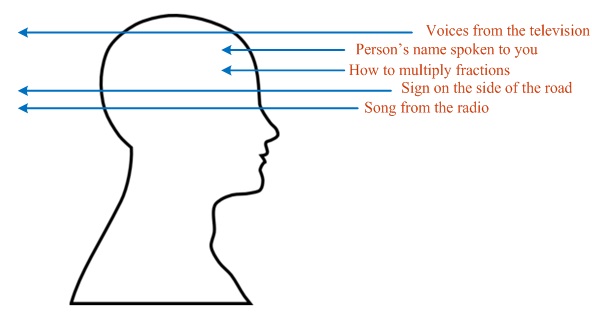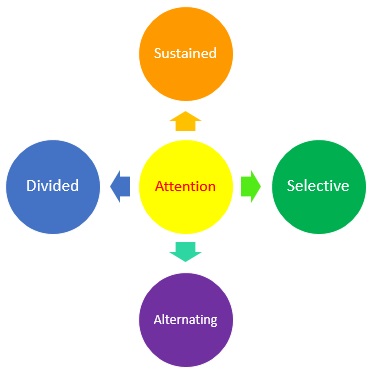Paying Attention and Memory
Memory is the processes that is used to acquire, retain, and later retrieve information. The first stage of memory is encoding. Encoding is the process of getting information into memory. It occurs when information is translated into a form that can be processed mentally.
How Encoding Works
Information from the environment is constantly reaching your senses in the forms of stimuli. Encoding allows you to change that stimuli so you may put it into your memory. If information or stimuli never gets encoded, it will never be remembered. Information or stimuli has to be paid attention to in order to be encoded. Thus, attention is a significant part of the memory process.
Paying Attention and Memory
The process of remembering begins with attention. Attention is the ability to focus on an event, object, person, or task. If you do not pay attention to the information, it will not get encoded and thus you will not be able to remember it at a later time.
Generally, if you have difficulty paying attention, you will likely have difficulty remembering information. The opposite is also true, in that if you pay attention and focus, you will be able to remember information easier.
People often will forget the name of someone they met just a few minutes earlier. This is usually because the name never gets encoded. People are often thinking of something else, when they are introduced to the person, and they never encode the name.
Typically, the environment around you has too much stimuli for you to encode all that is happening. Therefore, you attend to some information in your environment and you ignore other information.
Types of Attention
There are four types of attention. These different types of attention affect memory differently, and explains why you may encode some stimuli and not others. The four types of attention:
Sustained – ability to focus on a specific task for a continuous amount of time
Selective – ability to select from many factors and to focus on one with filtering out distractions
Alternating – ability to switch your focus back and forth between different tasks
Divided – ability to process two or more responses simultaneously by dividing you attention
Sustained attention is when you focus on one specific task without being distracted, so most of the information is encoded. Selective attention allows you to select what to focus on while filtering out distractions. This also allows you to encode the information you feel is important. Divided attention and alternating attention occurs when you are paying attention to more than one thing at the same time, thus not encoding all the information.
Keys to Helping You Pay Attention
- Get enough rest so you are not tired
- Do activities in a quiet area to avoid distractions
- If too quiet is distracting for you, listen to classical or non-distracting music
- Use ear plugs or head phones in noisy areas
- Prioritize task
- If you need to do two task at once, perform one physical task and one cognitive task so that you are not overloading your cognitive functions
- Take quick breaks to give your mind a rest
- Periodically get up and move around to keep you blood flowing
- Write information down
- Chunk information
- Map out information in a visual way
- Relax
Related Links
Types of Memory


